Natural History Reserve
For more information: Background of the Natural History Reserve (PDF)
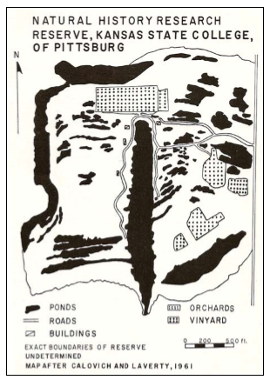 About the Grounds
About the Grounds
The Natural History Reserve (NHR) is 79 acres (32 ha) of partially reclaimed abandoned mine land. It was originally covered by tallgrass prairie then converted to agriculture prior to the coal mining era. Mining ceased before the regulation requiring restoration, and so it was left as a series of parallel spoil banks and over 60 long and narrow strip-mine lakes of various sizes in the depressions beneath them. Four of the pits are large, three bordering the property and one mostly within it. The spoils are heavily wooded with a dense shrub layer.
Natural succession since the late 1930s has resulted in a brushy woodland type of complex in which cottonwood, American elm, Sycamore, Sumac, Poison ivy, Japanese honeysuckle, Amur honeysuckle, and Gray and Redosier dogwood are common. Many of the smaller pits hold water only intermittently. The larger lakes hold water permanently but are subject to water level fluctuations depending on rainfall.
Of the four buildings in the Reserve, two were constructed in the 1940s prior to PSU acquiring the property – a barn and quonset hut – two are new - a caretaker’s residence and an education/lab building (Figures 1 and 2). The barn and quonset hut are used mostly for storage and are decaying.
An old barn from the 1940s was converted into a classroom and laboratory, serving field biology classes in the late 1960s. This building was demolished in late 2005 and replaced in 2006 with a new building. The new construction retained the four large aquacultural tanks (two indoor and two outdoor). Adjacent to the new lab are large pens for the raptors and a small model prairie called the Sperry Prairie.
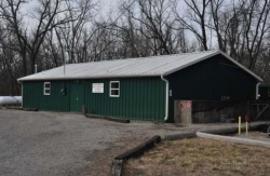 The caretaker’s residence, also dated from the 1940s, became too costly to continually repair, and a new residence was constructed in 2014. The large main strip-pit lake has a floating dock and is used for field classes. Several fish aquaculture cages used for teaching and research have been used there and are stored at the quonset hut.
The caretaker’s residence, also dated from the 1940s, became too costly to continually repair, and a new residence was constructed in 2014. The large main strip-pit lake has a floating dock and is used for field classes. Several fish aquaculture cages used for teaching and research have been used there and are stored at the quonset hut.
Current Use
The Natural History Reserve has a history of use for research, education, and service. An initial aquatic study was published in 1953 by Charles C. Burner and Claude Leist (“A Limnological Study of the College Farm Strip-Mine Lake.” Transactions of the Kansas Academy of Science. 56:78-85). Many theses, most recent ones involving fish culture, have been conducted on the site or using the site.
Undergraduate students have also been involved in research or service projects at the NHR. In the spring of 2004, Jamie Horton established a small prairie plot for the purpose of environmental education. The plot remains today, but it has been reestablished at least once.
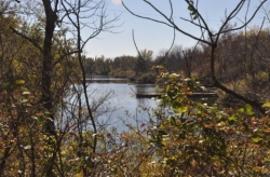 The NHR is also used in undergraduate and graduate education. Upper division and graduate field biology classes use the Reserve for class related field work. In Limnology, the main pit is used for sampling and the lab building as a base for field water quality analysis. In Terrestrial Field Ecology, vegetated areas have been used for quantitative vegetation surveys. In Regional Natural History, the site is used for mammal track and sign collection, bird observation, and plant identification. The NHR is also used by Mammalogy and Ornithology. The site is also used for observations of ecology or raptors in the non-major biology course Environmental Life Science and the mixed-major course General Biology. Over 800 students access the site each year.
The NHR is also used in undergraduate and graduate education. Upper division and graduate field biology classes use the Reserve for class related field work. In Limnology, the main pit is used for sampling and the lab building as a base for field water quality analysis. In Terrestrial Field Ecology, vegetated areas have been used for quantitative vegetation surveys. In Regional Natural History, the site is used for mammal track and sign collection, bird observation, and plant identification. The NHR is also used by Mammalogy and Ornithology. The site is also used for observations of ecology or raptors in the non-major biology course Environmental Life Science and the mixed-major course General Biology. Over 800 students access the site each year.
The NHR also houses a set of outdoor cages for raptors used in the department’s environmental education program, Nature Reach. Biology majors also gain experience (coursework or volunteer) in raptor care.
Many construction and service projects have occurred at the Reserve, mostly involving infrastructure for Nature Reach. Students in the Principles of Conservation course have performed service projects for the site. Outside parties have also contributed to the NHR. Donations or in-kind contributions have been received from several local community groups, businesses, and individuals.
During the summer, nature camps are held for grade school children under the direction of Nature Reach. A teaching garden was developed adjacent to the caretaker's home to be used as part of the camps. In addition, a picnic/teaching area was established at the south end of the education/lab building.
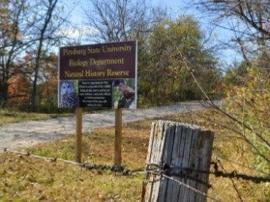 |
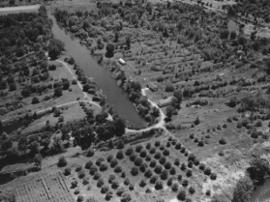 |
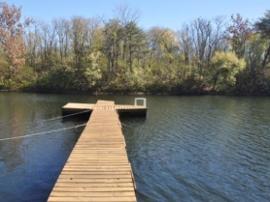 |
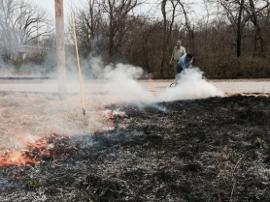 |
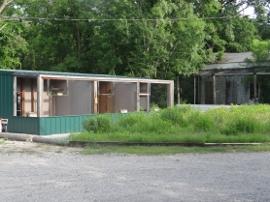 |
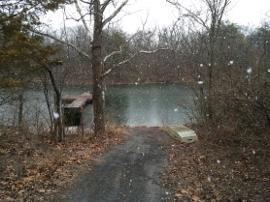 |